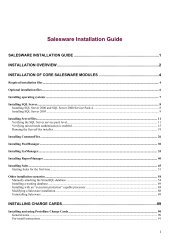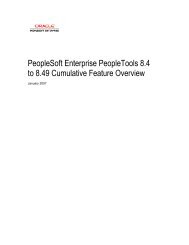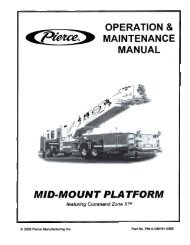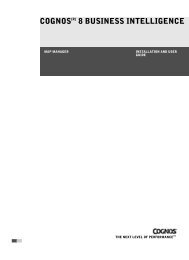COGNOS Business Intelligence Series 7
pes.pdf
pes.pdf
Create successful ePaper yourself
Turn your PDF publications into a flip-book with our unique Google optimized e-Paper software.
Chapter 4: Deploy Cubes and Reports<br />
Target Parameter<br />
Filter Parameter<br />
where:<br />
specifies the target cube or report to open, specifies the filter<br />
values, and specifies the format in which to open a report.<br />
The following sections describe building the parameters to specify how you want a cube or report<br />
to be displayed.<br />
The target parameter is the name of the PowerPlay report or cube to run. The name must be the<br />
name as specified in PowerPlay Enterprise Server - Administration, and is not the Upfront<br />
NewsItem name.<br />
If you publish a cube or report in PowerPlay Enterprise - Server Administration, the name is the<br />
object name that you assigned to it, and may be prefixed with a folder name. If a report was saved<br />
to Upfront from PowerPlay Web, it is the NewsItem ID that identifies the report, not its name.<br />
The filter parameter is a string with the following format:<br />
....<br />
When you specify a filter, the dimension name and category codes must match the dimension<br />
names and category codes known internally to PowerPlay. If PowerPlay encounters a dimension<br />
name that has no match or a category code that cannot be found, it is ignored.<br />
You can find the names and category codes by using the following steps.<br />
Steps<br />
1. Open a report or cube.<br />
2. Drill down or adjust the view until you have the categories and dimension you require<br />
displayed.<br />
For example, you can filter on 1997 in the Years dimension, Tents in the Products dimension,<br />
and Revenue in the Measures dimension.<br />
3. Save the view as a .ppx report.<br />
When you save the view as a .ppx report, it is available in the Imported Reports folder in the<br />
ppserver directory.<br />
4. In Upfront, click Report Properties, and then Advanced Properties.<br />
5. In the Source Report Name section, locate the unique identifier for the report, and note its<br />
filename and path.<br />
6. Open this file in Notepad or any text editor.<br />
7. Locate the following in the .ppx file:<br />
<br />
where value specifies the filter parameters used in the report.<br />
For example,<br />
<br />
8. Locate the filters in the .ppx file, using their reference Ids.<br />
For example, where the reference Ids are 277, 413, and 4, the following lines of code appear<br />
in the .ppx file.<br />
<br />
<br />
<br />
Note: If your dimensions do not have recognizable names, you can identify them by the<br />
DimIdx. DimIdx="0" indicates the first dimension in the tree structure, DimIdx="1" the<br />
second, et cetera.<br />
56 Cognos PowerPlay (R)
















